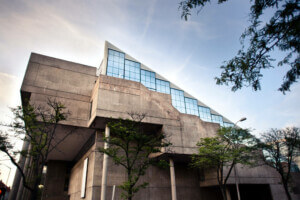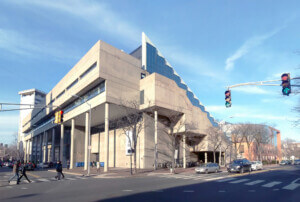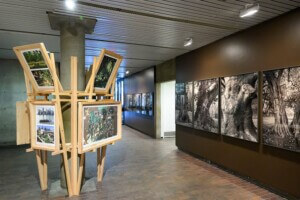Today, Jingru (Cyan) Cheng has been named the recipient of the 2023 Wheelwright Prize, an annual prize from the Harvard Graduate School of Design (GSD) awarded to an individual taking on original architectural research that shows potential to make a significant impact on architectural discourse.
Cheng was chosen from a group of four finalists to receive the prize created in 1935 in memory of Arthur W. Wheelwright. Her work spans disciplines, ranging from architecture, anthropology, and filmmaking, while touching on topics related to immigration and labor, and water. Her winning proposal Tracing Sand: Phantom Territories, Bodies Adrift, continues her research looking at the economic, cultural, and ecological impacts of sand mining and land reclamation. The $100,000 grant awarded to Cheng through the Wheelwright Prize will support Cheng’s research and travel, namely visits to airports in Singapore, beaches in Florida, rivers in the Mekong Delta in Vietnam, and rural immigrant communities in China, over the next two years.
“The proposal of Tracing Sand is the convergence of my different lines of work so far, the teachings that made me an architect, and the life experiences that made me,” Cheng said in a statement. “Winning the Wheelwright Prize affirms that the questions I’m after are part of the larger quest of architecture today, at a time of intensified social injustice and ecological crisis. As a travel-based design research award, the Wheelwright cannot be more fitting for this rather audacious proposition: to follow sand is to trace architectural materiality through supply chains and ecosystems. It is to learn through embodied experiences the entangled flows of people, life forms, matter, and the built environment across scales. Understanding how interconnected and interdependent we all are is fundamental today. I believe architecture provides a material wayfinding through this almost incomprehensible entanglement—and offers possibilities to transform it.”
Cheng currently teaches an interdisciplinary module at the Royal College of Art in London, and has previously led a studio that aligns with her practice’s political focus. Cheng has also received commendations from from the Royal Institute of British Architects (RIBA) President’s Awards for Research in 2018 and 2020, was 2022 Graham Foundation Grantee. Her work was featured in the 2019 Seoul Biennale of Architecture and Urbanism, the 2018 Venice Architecture Biennale, and among others.
The jury for this year’s Wheelwright Prize included Noura Al Sayeh, Head of Architectural Affairs for the Bahrain Authority for Culture and Antiquities; Mira Henry, design faculty at Southern California Institute for Architecture; Mark Lee, Chair of the Department of Architecture and Professor of Practice at Harvard GSD; Jacob Riedel, Assistant Professor in Practice of Architecture at Harvard GSD; Enrique Walker, Design Critic in Architecture at Harvard GSD; and Sarah M. Whiting, Dean and Josep Lluís Sert Professor of Architecture at Harvard GSD.
Cheng joins the ranks of previous winners, such as the 2022 winner Marina Otero for her project Future Storage: Architectures to Host the Metaverse, and the 2021 winner Germane Barnes for his project Anatomical Transformations in Classical Architecture.
“Tracing Sand examines an increasingly ubiquitous material that is at the base of the production of land and architecture by following its sourcing and consumption, unveiling the increasing entanglement of matter and site, as well as the livelihoods affected by its extraction,” said jury member Al Sayeh in a press release. “By dissecting the complexity of material supply chains and the complicity of architecture in the destruction of natural environments, Cyan’s research bridges opposing sites and actors, from extraction to consumption, local communities to stakeholders. Through a multi-media approach and an in-depth analysis of the guts of hypermodernity, the proposal aims towards a comprehensive shift in the value system of architecture.”











